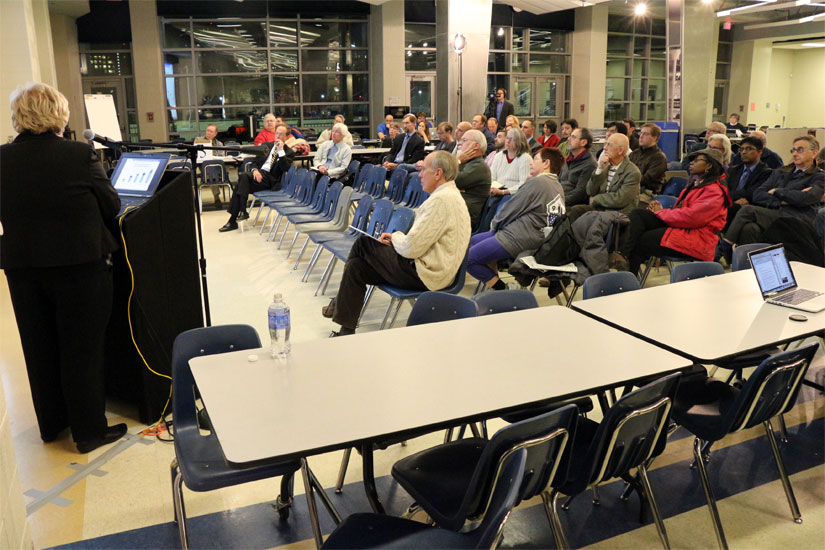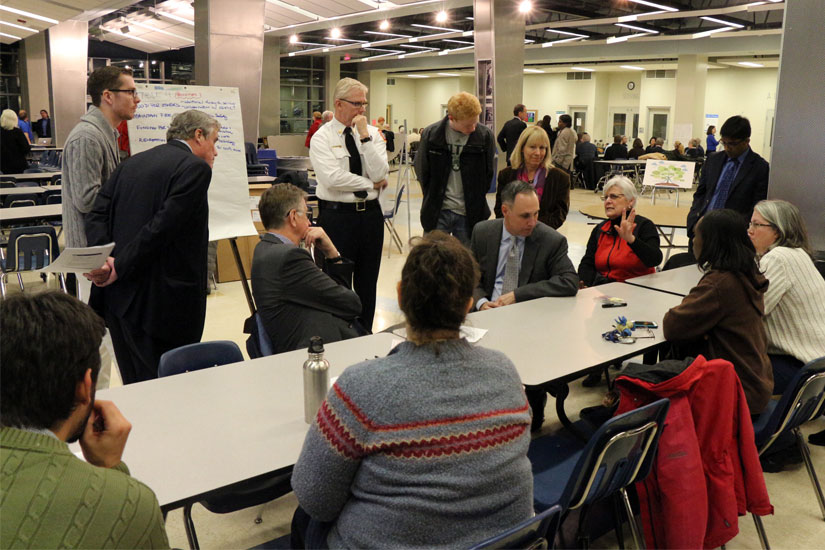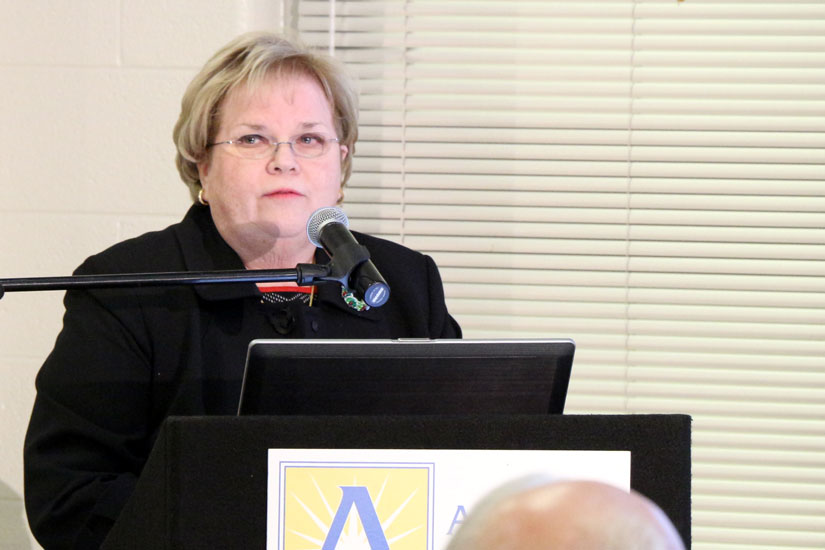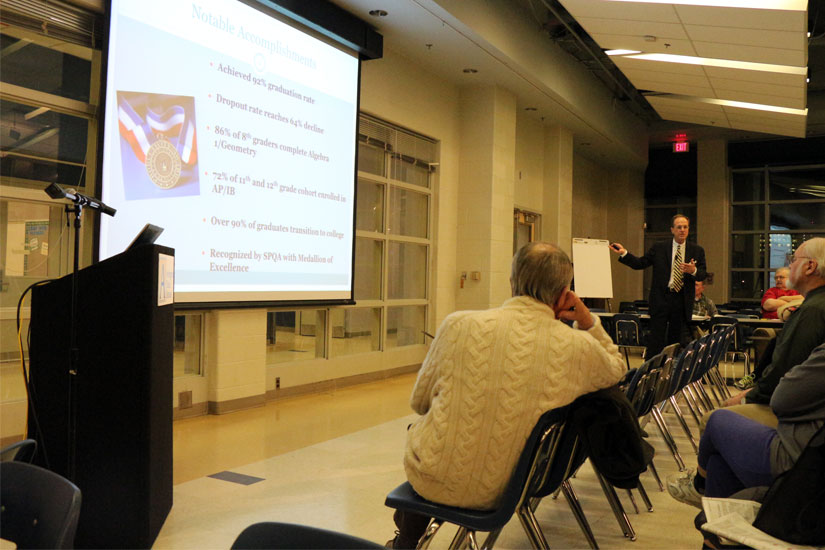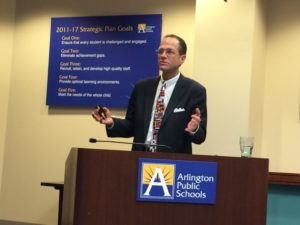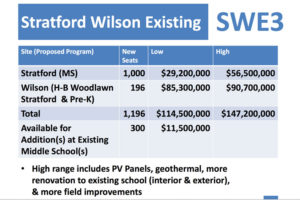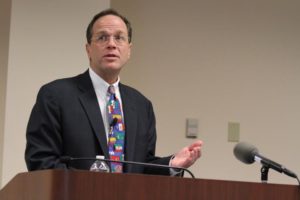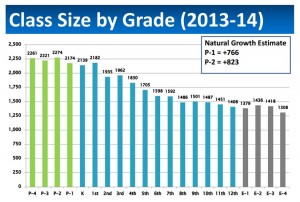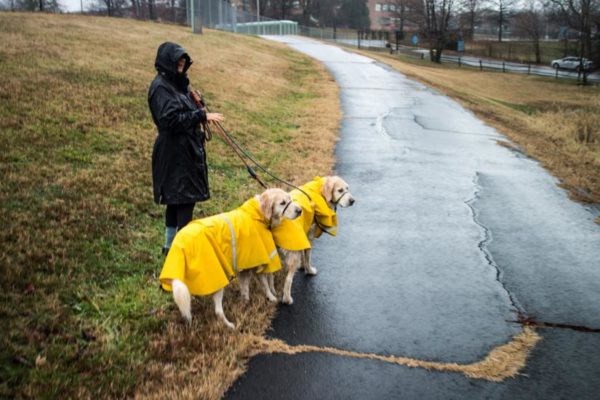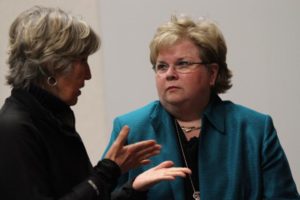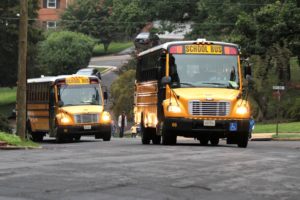 (Updated at 4:05 p.m.) Arlington Public Schools has begun exploring whether to expand school bus service to additional students throughout the county in the coming years.
(Updated at 4:05 p.m.) Arlington Public Schools has begun exploring whether to expand school bus service to additional students throughout the county in the coming years.
In a presentation to the School Board this morning, APS Assistant Superintendent of Facilities and Operations John Chadwick outlined a plan for shrinking the “walk zones” around schools — areas where children are ineligible for bus service because of their proximity to the school — to a half-mile around elementary school, three-quarters of a mile around middle schools and a mile around high schools.
(Currently, the walk zone is within a mile of elementary schools and 1.5 miles of middle and high schools.)
The proposal was suggested by APS’ Multimodal Transportation and Student Safety Special Committee (MMTSSSC), but is not being recommended for approval by the School Board yet. Instead, Chadwick laid out what the zones would change from the current setup: 3,694 students currently ineligible for bus service would become eligible, a 25 percent increase over current walk zones.
Middle schools would see the biggest increase in eligible ridership, with 50 percent more students able to ride the bus, including a 78 percent increase at Kenmore Middle School. Elementary schools would see a 16 percent increase in eligible riders, and high schools a 30 percent increase.
How much the substantial increase in eligible riders would cost, if the plan were implemented, is more complicated. Currently, only 54 percent of eligible elementary school students, 70 percent of middle schoolers and 56 percent of high schoolers actually take the bus, APS says.
“[The] actual cost of walk zone reduction,” the presentation reads, “is contingent on how many additional students actually ride the bus, which is impossible to determine without actual experience.”
APS estimates that if the changes result in 70 percent ridership, it will cost APS $3.76 million for 26 new buses, plus drivers and attendants, but that doesn’t account for gas, insurance, maintenance and other costs. If ridership hits 80 percent, that would mean 30 new buses and an estimated $4.35 million in additional costs.
With a $16.1 million transportation budget, bussing currently costs APS $1,100 per eligible student. However, because of the current low ridership rate, APS says “bus utilization may be increased without incurring substantial additional costs.”
To acquire better data, Superintendent Patrick Murphy has recommended instituting several smaller changes during the 2014-2015 school year, but because the School Board approved new Director of Transportation David McRae this morning, APS staff doesn’t anticipate any changes taking effect before students return for classes in September.
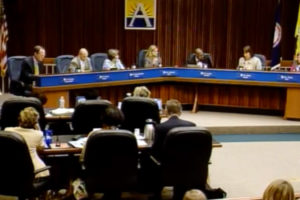 Among the proposed changes is distributing new ID cards to all students, installing GPS on every bus, upgrading APS’ routing software and providing “School Pool” carpooling software for parents. ID cards, while proposed as part of the transportation plan, wouldn’t just be used for buses.
Among the proposed changes is distributing new ID cards to all students, installing GPS on every bus, upgrading APS’ routing software and providing “School Pool” carpooling software for parents. ID cards, while proposed as part of the transportation plan, wouldn’t just be used for buses.
“It will be used by the Transportation Department to know who is on the buses,” Assistant Superintendent of School and Community Relations Linda Erdos told ARLnow.com, “and at some point in the future it could be expanded to be used for lunch, library use, and we’ve even discussed with the county the possibility of students being able to use their ID card for access to other county services, although that is a very preliminary discussion and no firm decisions for expanded use have been made.”
The larger walk zone discussion, under the current plan, wouldn’t come before the Board for approval until the FY 2017 budget process. Before then, Murphy recommends selectively increasing “ridership on buses within current walk zones before considering walk zone reductions.” Murphy hopes the data gathered from his proposed changes will allow APS to plan for growth in current eligible ridership.
Erdos said the recommendations may go before the School Board “later in the year” to allow McRae, who starts Sept. 1, to “participate in the final decision and process.”




